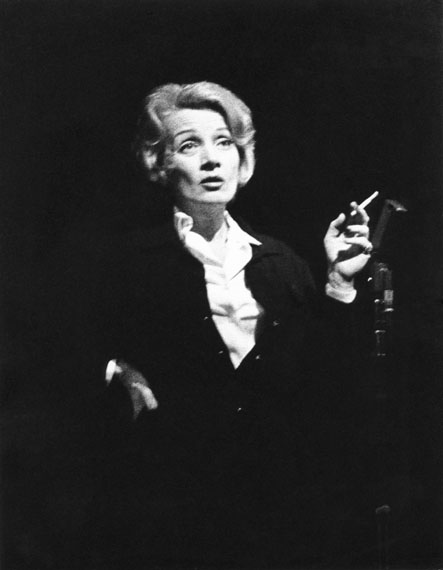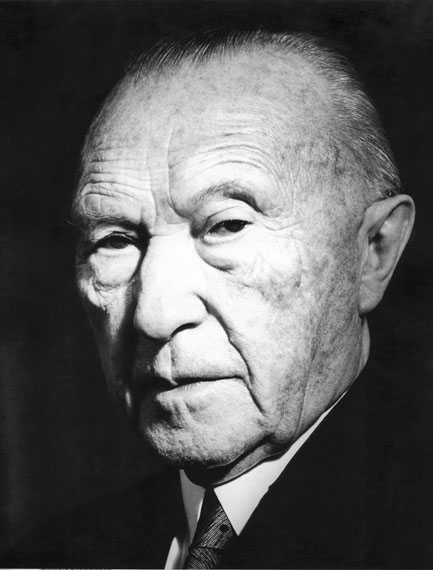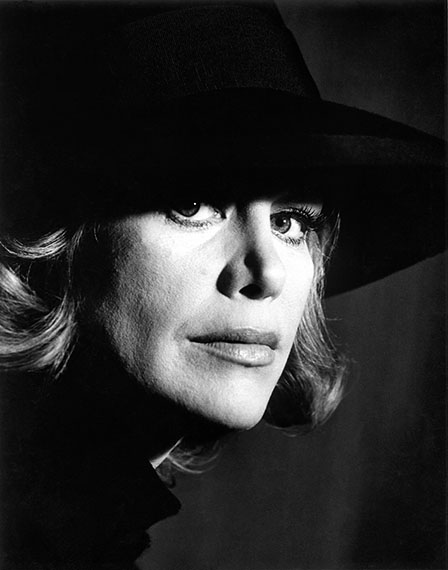
Liselotte Strelow »
BILDERGESCHICHTEN
Exhibition: 11 Sep – 31 Oct 2019
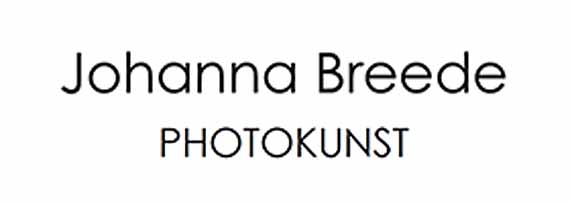
Johanna Breede PHOTOKUNST
Fasanenstr. 69
10719 Berlin
+49 (0)30-88913590
photokunst@breede.de
www.johanna-breede.com
Tue-Fri 11-17, Sat 11-14
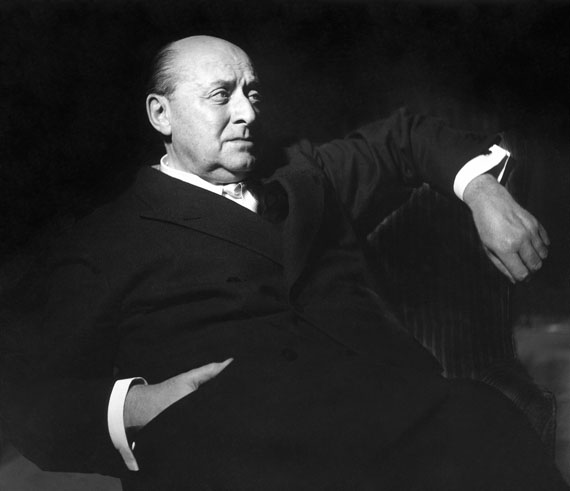
Liselotte Strelow (1908 – 1981)
BILDERGESCHICHTEN
Exhibition: 11 September – 31 October, 2019
"The most entertaining surface on earth is that of the human face." (Georg Christoph Lichtenberg)
On September 11, Liselotte Strelow would celebrate her 111th birthday - enough to commemorate her photographic work, the image of a photographer who is one of the most important and most accomplished representatives of German portraiture and theater photography of the 20th century. Her camera was the meeting point of many interesting faces and personalities. The result was an extensive picture gallery - today also a part of contemporary history of the 20th century. The protagonists of the fine arts, literature, theater or even greats of the political scene as well as representatives of industry and economy - all of them can be found in the portrait archive of Liselotte Strelow: Gottfried Benn, Jean Cocteau, Peggy Guggenheim, Theodor Heuss, Hildegard Knef , Oskar Kokoschka, Thomas Mann, Gerhard Marcks, Helen Weigel - just to name a few.
In all these portraits Liselotte Strelow transmits in all her subjectivity, an essential quality of author photography. Her portraits are governed by a human image that undermines all stereotypes and defies the customization of humans in the photographic image. The human face alone is the bearer of expression, it is a reflection of human experience, of human destiny. Lived life is reflected in her photographic images. Without any adornments, unfussy, unadorned and soberly photographed, it brings out the individual features without any beautification, profiled by simple objectivity. The viewer's gaze focuses directly on the landscape of the depicted face. It is the Bauhaus idea that consistently accompanies her time as a photographer: nothing distracts from the essential, as she herself writes in her, unfortunately, unpublished memoirs. With the strong black-and-white contrasts that are so typical of her photography, she models the portrayed as well as plastic images - it is the attempt to reach a third dimension. She staged in a theatrical chiaroscuro contrast, reminiscent of the Max Reinhardt stage in Berlin in the 1920s and early 1930s and the expressionist theater.
Here, in the work of the portrait photographer, the theater photographer Liselotte Strelow comes to life, who started her education at the Lettehaus and continued in 1932 at the Kurfürstendamm, with the Jewish children and opera photographer Suse Byk. Both Berlin institutions, which had a lifelong influence on her photography.
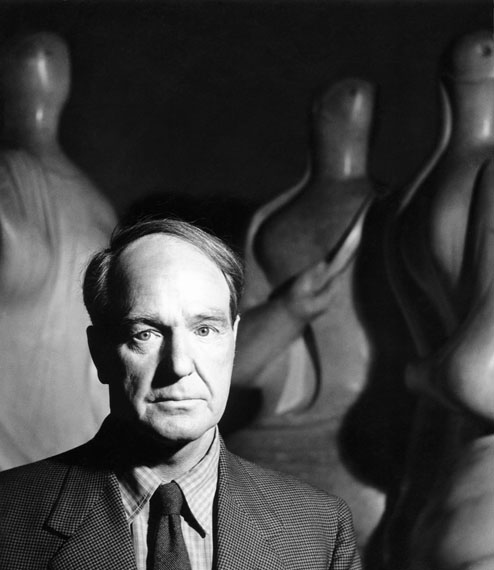
Liselotte Strelow (1908 – 1981)
BILDERGESCHICHTEN
Ausstellung: 11. September bis 31. Oktober 2019
"Die unterhaltendste Fläche auf der Erde ist die des menschlichen Gesichts." (Georg Christoph Lichtenberg)
Am 11. September würde Liselotte Strelow ihren 111. Geburtstag feiern – Anlaß genug, an ihr photographisches Werk zu erinnern, an das Bild einer Photographin, die zu den bedeutendsten und arriviertesten Vertretern der deutschen Portrait- und Theaterphotographie des 20. Jahrhunderts gehört. Ihre Kamera war Treffpunkt vieler interessanter Gesichter und Persönlichkeiten. Es entstand eine umfangreiche Bildergalerie – heute zugleich ein Stück Zeitgeschichte des 20. Jahrhunderts. Die Protagonisten der Bildenden Kunst, der Literatur, des Theaters oder auch Größen der politischen Szene ebenso wie Vertreter der Industrie und Wirtschaft – sie alle sind im Portraitarchiv von Liselotte Strelow zu finden: Gottfried Benn, Jean Cocteau, Peggy Guggenheim, Theodor Heuss, Hildegard Knef, Oskar Kokoschka, Thomas Mann, Gerhard Marcks, Helen Weigel – um nur einige zu nennen.
In all diesen Bildnissen überträgt sich Liselotte Strelow in ihrer ganzen Subjektivität, eine wesentliche Eigenschaft der Autorenphotographie. In ihren Portraits regiert ein Menschenbild, das alle Klischees unterläuft und sich der Konfektionierung des Menschen im photographischen Abbild widersetzt. Das menschliche Gesicht allein ist Ausdrucksträger, es ist Spiegelbild menschlicher Erfahrungen, menschlichen Schicksals. Gelebtes Leben spiegelt sich in ihren photographischen Abbildern wider. Ohne jegliches Beiwerk, schnörkellos, ungeschminkt und nüchtern photographiert, bringt sie die individuellen Züge ohne Beschönigung zur Geltung, profiliert durch schlichte Sachlichkeit. Der Blick des Betrachters konzentriert sich direkt auf die Landschaft des abgebildeten Gesichts. Es ist der Bauhaus-Gedanke, der sie Zeit ihres Photographen-Daseins konsequent begleitet: Nichts darf vom Wesentlichen ablenken, wie sie selbst in ihren, leider unpublizierten Memoiren schreibt. Mit den für ihre Photographie so typischen, harten Schwarz-Weiß-Kontrasten modelliert sie die Portraitierten wie plastische Abbilder – es ist der Versuch, eine dritte Dimension zu erreichen. Sie inszeniert in theatralischem Helldunkelkontrast und erinnert dabei an die Max-Reinhardt-Bühne im Berlin der 1920er und frühen 1930er Jahre sowie das expressionistische Theater.
Hier wird im Werk der Portraitphotographin gleichsam die Theaterphotographin Liselotte Strelow lebendig, die ihre Ausbildung am Lettehaus begann und 1932 am Kurfürstendamm, bei der jüdischen Kinder- und Opernphotographin Suse Byk fortsetzte. Beides Berliner Institutionen, die einen lebenslang bestimmenden Einfluß auf ihre Photographie hatten.
